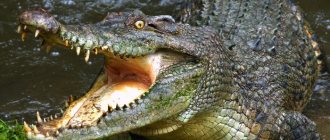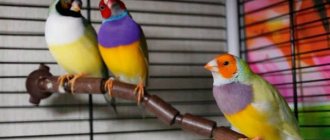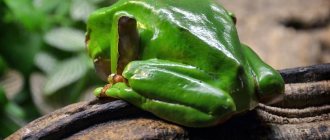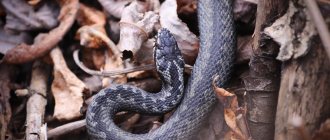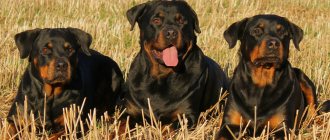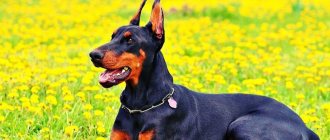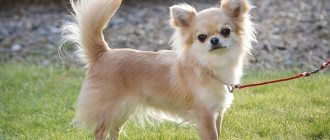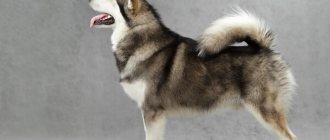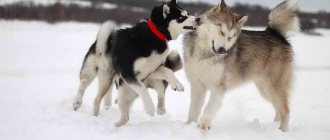These lizards ate any vegetation they could reach. Small-sized dinosaurs ate roots and low-growing plants, while huge individuals that could reach the tops of trees feasted on juicy young leaves. Among the famous herbivorous dinosaurs, the following stand out: Diplodocus, Mamenchisaurus, Plateosaurus, Iguanodon, Corythosaurus, Triceratops, Stegosaurus and many others.
Cycad - a typical food of dinosaurs
Many herbivorous dinosaurs defended themselves from enemies with the help of a flexible and rigid tail, which they used as a whip. Herbivorous lizards could hit attacking predators with such force with their powerful weapons that they fell dead.
Ankylosaurus
Ankylosaurus
Height: 2.5 meters Weight: 2-4 tons Length: 11 meters Diet: herbivorous Habitat: Late Cretaceous
Appearance in previous films in the series: in the third part of Jurassic Park, the main characters see a small group of ankylosaurs grazing near a pond.
The remains of a tank-like lizard were first discovered in Canada at the beginning of the last century, but archaeologists have still not found a single complete skeleton. The ankylosaur's squat and powerful body was covered with bony plates and scutes on its back and legs. The weak spot was the soft, uncovered belly. Because of this, predators tried to turn over the heavy lizard and gnaw through the unprotected area.
At the end of the ankylosaur's long tail there was a kind of club - two ossifications fused to the spine. There are two theories about the purpose of such a weapon: according to the first, the lizard used its growth to brush off oncoming predators, knocking them down and even breaking their bones. The second is that the dinosaur used the club as a decoy so that an attacker from afar would mistake it for its head. Both assumptions are consistently challenged and confirmed as new remains are discovered.
Diplodocus and Mamenchisaurus - giant sauropods
Diplodocus is a dinosaur from the group of sauropods. Its length from head to tip of tail was 28 meters. An adult would need to take at least 40 steps to walk along the body of a diplodocus!
Diplodocus
Mamenchisaurus was also a sauropod. He is the absolute record holder for neck length. Imagine, the neck of this animal alone was more than 10 meters long! And the body weight of Mamenchisaurus sometimes reached 20 tons.
The largest animals
As is known, land animals larger than sauropods have never existed on our planet. In order not to starve, herds of these lizards were forced to constantly travel in search of food. When all the grass and leaves from the trees in the area were eaten, the animals went to a new grazing site. To get enough, these giants ate almost the whole day without stopping.
Why did dinosaurs swallow rocks?
In addition to plants, sauropods also swallowed stones. Yes, exactly stones, the size of a tangerine or a small apple. And they did this not at all because the stones were tasty or because they lacked food. It’s just that the teeth of herbivorous dinosaurs could not grind food, that is, the lizards did not chew leaves, but swallowed them whole. And to make it easier for the stomach to digest tens of kilograms of plants eaten per day, dinosaurs sent stones into it, which ground and crushed the food, improving digestion.
Diplodocus structure
Distinctive features of Diplodocus: 1. The long neck consisted of 15 vertebrae and ended in a small head 2. The unpaired nostril was located on top of the head, above the eyes 3. The teeth were scapula-shaped and grew only in the front of the jaws 4. The long tail consisted of 80 vertebrae.
and hollow bones 5. The massive skeleton of Diplodocus had massive legs, similar to those of an elephant. Moreover, his forelimbs were shorter than his hind limbs. The animal's long neck ended in a small snake-like head. The jaws contained teeth that looked like pencils. Diplodocus used them to tear the leaves of ferns. He could not pick leaves from the trees - the lizard was not able to raise his neck so high. The diplodocus skull contained a brain only the size of an egg.
Stupid Mamenchisaurus
The brain of Mamenchisaurus was small - like a walnut.
Unlike Diplodocus, Mamenchisaurus ate leaves from trees, as it was able to reach them with the help of its long neck, which it raised quite high. However, Mamenchisaurus had an even smaller brain than Diplodocus. It was no larger than a walnut. Because of this, the animal was not particularly smart. In addition, it was a slow and clumsy lizard.
Apatosaurus
Apatosaurus
Height: 20-23 meters Weight: 24-32 tons Length: 22-27 meters Diet: herbivorous Habitat period: Late Jurassic
Appearance in previous films in the series: in the first part of Jurassic Park, the main characters call the lizard by the outdated name brontosaurus when they see it grazing in a field. And in the second part, the Apatosaurus can be seen during an attack by poachers.
A lizard with a small brain (only 400 grams), but impressive sizes: apatosaurs walked on four legs, weighed like several elephants, and reached the height of a five-story building. The name “apatosaurus” does not mean a single species of lizard, but an entire genus. “Thunder lizards” were not much different from each other: each species had a long tail and neck. There are differences in the structure of the head and the shape of the spine.
Scientists have not yet decided whether it is worth combining the found skeletons of brontosaurs into one whole. Five species of such dinosaurs lived in North America, all of them preferred to unite in herds to successfully repel attacks by carnivorous dinosaurs. Apatosaurus defended themselves in the same way and had a similar body structure: with the help of a tail and claws on the front paws. Small species, like diplodocus, were able to stand on their hind limbs.
Dinosaurs of the Cretaceous period
Continents during the Cretaceous period
The Cretaceous period lasted from 145 to 66 million years ago. At that time, the continents on Earth had already moved away to considerable distances, and oceans had formed between them. The temperature on the planet gradually decreased. Approximately 70 million years ago, territories appeared where this parameter was in the range from -10 to -45 degrees Celsius.
Also during the Cretaceous period, there was a large-scale eruption of volcanoes in the Indian Ocean, due to which the concentration of oxygen in the water sharply decreased. This led to the extinction of a large number of underwater species. Towards the end of the Cretaceous period, a cataclysm occurred, due to which dinosaurs gradually disappeared, and they were replaced by new animals that were able to adapt to a colder climate.
Velociraptor
Velociraptor
A feathered predator that attacked small animals. Thanks to the sharp claws on its front paws, it could easily cut up prey and eat it in pieces. Also, the dinosaur was not afraid to engage in battle with large opponents. Velociraptor lived in China and Mongolia approximately 80 million years ago.
Interesting: What was the climate like during the time of the dinosaurs? Photo and video
Spinosaurus
Spinosaurus
Spinosaurus lived in Africa between 112 and 93 million years ago. The predator grew up to 16 m in length, and its weight could reach 15 tons. The dinosaur had an unusual spine, which was a small sail rising above its back. Spinosaurus's teeth were sharp, thanks to which it could hold its prey tightly, preventing it from escaping.
Elasmosaurus
Elasmosaurus
An underwater predator that had a long neck, which allowed it to make sharp lunges and grab prey. He ate mainly fish. The body length of an adult individual reached 13 m, and the body weight was 500 kg.
Interesting fact : to make it easier to digest food, Elasmosaurus swallowed small stones, which subsequently crushed dense pieces of meat.
Thalassodromeus
Thalassodromeus
species lived in Brazil 110 million years ago. Initially, it was believed that Thalassodromeus fed on fish, flying over the water and scooping up food and liquid with its large mouth. But further research showed that most likely the dinosaur hunted on land, looking for small animals.
Tyrannosaurus
Tyrannosaurus
A predatory species of dinosaur that lived on the lands of modern North America. The size of an adult individual could reach up to 13 m in height, and the weight was in the range of 9 tons. Tyrannosaurus moved on its hind limbs, the front ones were short. The predator hunted most of the creatures that lived on its lands.
Mosasaurus
Mosasaurus
The Mosasaurus was an aquatic predator that grew up to 17 m in length and weighed 12 tons. The dinosaur had a long tail, allowing it to quickly maneuver under water, and a long mouth with sharp teeth. The predator had flipper-like paws as its limbs.
Deinonychus
Deinonychus
A predatory dinosaur that lived on Earth approximately 115 million years ago. Deinonychus bones have been found in the United States. The dinosaur grew up to 3.3 m in length, and its weight could reach up to 100 kg. Deinonychus moved on its hind limbs, the fingers of which were equipped with sharp claws.
Tapejara
Tapejara
A species of flying dinosaur that lived in what is now Brazil about 110 million years ago. The main feature of the Tapejara's appearance is the large bony growth on the top of the head. The bones found allowed scientists to identify three separate subspecies of the dinosaur, which had slight differences in their skeletal structure.
Maiasaurus
Maiasaur
Dinosaur lived in the United States; the first representatives of the species appeared approximately 83 million years ago. The Maiasaur's body grew up to 9 m in length. It consumed only vegetation for food. The dinosaur had a small crest between its eyes, perhaps only present in males.
Paralititan
Paralititan
A massive herbivorous dinosaur, whose dimensions could reach up to 25 m and weight up to 45 tons. The vertebrae of Paralititan were 80% hollow, which made it difficult for him to move and keep his head on his long neck. It is believed that the dinosaur lived in packs near bodies of water. And when attacked by predators, the individuals stood in a circle and protected the young animals located in the center.
Hacegopteryx
Hacegopteryx
A flying species of dinosaur that lived in the territory of modern Romania approximately 70 million years ago. The wingspan of Hazegopteryx was 10-12 m. The dinosaur led a predatory lifestyle, and its dimensions allowed it to hunt even large creatures. The size of the skull reached 3 m, it was supported by a long neck.
Styracosaurus
Styracosaurus
Dinosaurs lived in Canada and the United States approximately 75 million years ago. Styracosaurus grew up to 5 m in length, and its weight was in the range of 1.9 tons. The structure of the teeth and jaws indicate that the dinosaur ate plant foods, but could also eat carrion. He did not hunt living creatures. There were long tusks above the nostrils and at the top of the head.
Quetzalcoatlus
Quetzalcoatlus
A flying dinosaur from the order of pterosaurs that lived on the planet about 70 million years ago. The wingspan of Quetzalcoatlus was 15 m. Bones were found in North America. The dinosaur is considered one of the largest flying creatures that has ever lived on the planet.
Fun fact : Quetzalcoatlus is named after the Aztec god of the Feathered Serpent.
Oviraptor
Oviraptor
Dinosaur lived in Mongolia and Tajikistan; the first representatives of the species appeared 89 million years ago. The length of an adult individual grew up to 2 m, and the weight varied from 40 to 50 kg. Oviraptor reproduced by laying eggs.
Bambiraptor
Bambiraptor
Bambiraptor lived in the state of Montana, USA, and appeared approximately 85 million years ago. The dinosaur grew up to half a meter in height, and had a long tail behind its body. The forelimbs were shaped like wings and covered with feathers, but Bambiraptor could not fly.
Baryonyx
Baryonyx
Height: 3 meters Weight: 2 tons Length: 12 meters Diet: carnivorous Habitat period: Early Cretaceous
Appearance in previous films in the series: although this lizard was not mentioned in the trilogy, according to the original script they wanted to make it the main dinosaur in the continuation of the original.
A small dinosaur with a crocodile face and long front legs that lived in what is now England. The lizard ate mainly fish: like a bear, it stood in a pond and caught prey with its upper limbs. If the slippery prey did not give in, Baryonyx lowered its head into the river and tried to capture it with a bite. To achieve this, its nostrils are prudently located higher than those of other relatives.
In case of danger, the “long claw” used sharp processes on the lower paws, especially if the aggressor was large. Based on later discoveries, it became clear that the dinosaur did not disdain to feed on the bodies of killed opponents or carrion. Again, the long muzzle with comfortable holes for breathing helped: you can dive deep into the carcass and not suffocate.
Dimorphodon
Dimorphodon
Wingspan: 1.5-2 meters Body length: meter Diet: carnivorous Habitat period: Early Jurassic
One of the smallest dinosaurs with wings - some individuals reached only 120 centimeters in length. This lizard is considered primitive due to its meager structure: a small brain, short limbs and a large head. Dimorphodon did not fly long distances and only sometimes planned from one place to another. It was also difficult for him to feed: the structure of his large jaws did not allow him to quickly grab or hold large fish in a vice.
There is still debate whether Dimorphodon should be classified as a pterosaur. It was suggested that the dinosaur moved more willingly on the ground: the fifth finger on the front limb supported the wings, so it could run nimbly on all fours. In this position, it was easy for the lizard to hunt insects or small lizards. In case of danger, Dimorphodon quickly climbed a tree, mountain or other hill.
Dracorex († Dracorex hogwartsia)
Dracorex was a herbivorous dinosaur that existed during the Late Cretaceous. This dinosaur reached 1.4 meters in height, 6.2 meters in length and weighed about 45 kg. Dracorex had an original long mouth. Numerous spikes and bumps were located on his skull.
It is currently still debated whether this dinosaur is a herbivore or not. Dracorex had extremely sharp teeth with many fangs,
therefore, some scientists classify it as an omnivore.
Its name, Dracorex hogwartsia, is taken from the popular Harry Potter book series by J. K. Rowling. As you understand, this name means “Dragon King of Hogwarts”.
Edmontosaurus
Edmontosaurus
Height: 4 meters Length: 13 meters Weight: 4.5 tons Diet: herbivorous Habitat period: Cretaceous period
One of the largest representatives of the genus of hadrosaurs - duck-billed dinosaurs. The first on the list of those whose skeletons were found completely intact several times. Edmontosaurus most likely was a favorite delicacy of tyrannosaurs, because it lived with them at the same time and ran relatively slowly. But even these ferocious predators sometimes received a rebuff: the dinosaur’s limbs ended with hooves, with which it could punch the attacker in the face.
The lizard lived in what is now North America, walked on both four and two legs, and with the help of a long duck jaw could chew pine cones and hard leaves on its own. This was a significant advantage: many herbivorous dinosaurs were forced to swallow stones in order to grind plants with their help.
Dinosaurs instantly became extinct after a meteorite hit
Skeleton of a Triceratops named Lane at the Houston Museum of Natural Sciences, Houston, Texas, USA.
Photo: Houston Museum of Natural Science / Agsftw / Wikimedia Commons We are used to thinking of a meteorite impact as something like an atomic bomb explosion. One “boom”, and the poor dinosaurs all fell upside down.
But that's not true. It took 10 Myths About Dinosaur Extinction almost 200,000 years for the common lizard-like dinosaurs to become extinct after the fall of Chicxulub. Due to the cloud of dust raised by the meteorite, the climate changed, there was less plant food, and large herbivorous dinosaurs gradually became extinct. And with them are predators.
Marine sauropsids, flying lizards, pterosaurs, and many species of mollusks and small algae died in company with dinosaurs. In total, Most comprehensive tree of life shows placental mammal diversity exploded after age of dinosaurs 16% of the families of marine animals and 18% of the families of land vertebrates have disappeared.
Galimim
Gallimimus
Height: 3 meters Weight: 450 kg Length: 8 meters Diet: omnivore Habitat period: Cretaceous Appearance in previous films in the series: in the first film, the main characters are hiding from a herd of Gallimimus when they are hunted by a tyrannosaurus. In the sequel to 1997, scientists rescue several lizards from poachers' cages.
The fastest of the ornithomimids, ostrich-like dinosaurs that ran on their hind legs. The impressive length of his legs and relatively low weight allowed him to accelerate to 70 kilometers per hour. An interesting film blunder: Gallimimuses did not form groups and preferred to run away from large predators on their own. In Jurassic Park they are shown grazing in a herd.
A curved neck, toothless beak, thin legs and neck - these tools allowed the dinosaur to hunt lizards, shrews and eat everything that could not be chewed: eggs of relatives and sometimes vegetation. With its lower jaw, which resembled a scoop, the lizard rummaged in the ground in search of worms and root vegetables.
Indominus Rex
Indominus Rex
Height: 5.5 meters Weight: 10 tons Length: 12 meters Diet: carnivorous
The only fictional beast in the collection and the main character of the upcoming "Jurassic World" is the Indominus Rex - a genetically created dinosaur called by the creators the most ferocious of all. The hybrid was made by combining the genetic codes of a tyrannosaurus, a velociraptor, a spinosaurus and other representatives of theropods - two-legged predatory lizards.
The body of the “indomitable king” is covered with osteoderms - ossified plates that protect it from bites and claws. The elongated mouth is filled with a dozen sharp teeth, which regenerate, like other representatives of this genus. The Indominus is also faster than similar lizards: it can reach speeds of up to 50 kilometers per hour and grab victims with its developed forelimbs.
Nodosaurus († Nodosaurus textilis)
Another famous herbivorous dinosaur is the Nodosaurus, which is very noticeable for its “armor”.
• This dinosaur was a herbivore. He had a rather narrow head with an elongated mouth. Interestingly, the nodosaur had cavities in its skull that separated its mouth from its nasal passages, thus making it capable of eating and breathing at the same time.
• Individuals of this genus existed from the Late Jurassic period until the Early Cretaceous period. Interestingly, at this time the lands of Alabama were divided into two parts: the northern part was covered with forests, and the southern part was covered with small lakes.
Metriacanthosaurus
Metriacanthosaurus
Weight: ton Length: 8 meters Diet: carnivorous Habitat period: Cretaceous
Appearing in previous films in the series: the Methriacanthosaurus embryo was stolen along with other embryos from a research facility.
The skeleton of the lizard has also not been fully restored, because the remains were found only a couple of times in what is now Great Britain. Initially, Methriacanthosaurus was classified as a terrestrial megalosaurus due to its similar body structure. Then an opinion arose that the dinosaur was more likely to belong to the spinosaurs. Underwater lizards, like him, had multiple spine-like growths on their spines, forming a hump.
Moschops († Moschops capensis)
Moschops is a genus of prehistoric herbivorous mammalian reptile that existed during the Permian period. Most of the remains of Moschops have been excavated in a region called the Karoo in South Africa.
In this habitat, Moschops was the largest herbivore. He had a massive
body (about 5 meters in length), a thick skull and a very short but heavy tail.
As mentioned above, this dinosaur had a herbivorous lifestyle, so its teeth were serrated at the ends - this helped to chew plants.
Microceratops
Microceratus
Weight: 5-6 kilograms Length: 50-80 centimeters Diet: herbivorous Habitat period: Cretaceous
A small lizard with a bird-like muzzle and a small bone collar covering the neck. The elongated jaw, which resembles a parrot's beak, helped the dinosaur tear off leaves and pluck grass. Thanks to its meager size and stance on two legs, Microceratops quickly ran and climbed trees.
Lizard-pelvic
The structure of the pelvis of this group of dinosaurs is similar to what we see in modern reptiles - reptiles of land vertebrates - crocodiles, turtles, lizards.
In turn, this group of dinosaurs is divided into two others - theropods and sauropods .
Theropods have limbs with three fingers and walk on two hind legs. Despite the name of the second group of dinosaurs (ornithischians), experts believe that modern birds descended from theropods.
Sauropods, often larger, walked on four legs, often had long necks and tails.
Mosasaurus
Mosasaurus
Length: large individuals - 17-25 meters, small ones - 3-5 meters Height: up to 3.5 meters Weight: from 2 to 25 tons Diet: carnivorous Habitat period: Cretaceous
Relatives of modern monitor lizards - Mesosaurs - lived in coastal waters and hunted everyone they could get their hands on: small fish, birds, large turtles and even white sharks. The species featured in the film was the largest in the genus. Some representatives climbed onto land on all fours to hunt for prey.
There is little evidence of this: only once was a skeleton found suspiciously close to the shore. In the water, they competed only with pliosaurs - more bloodthirsty sea monsters that even hunted their fellows. Unlike them, mesosaurs had a long tail, which allowed them to swim faster and avoid being caught in the mouths of large predators.
In the Jurassic World trailer, a mesosaur leaps out of the water to grab a shark or eat a flying dinosaur. Scientists cannot confirm or refute this ability: on the one hand, the lizards were too heavy for such maneuvers, and on the other, they had a long and elongated body that easily stretched into a string.
Who are dinosaurs?
Dinosaurs are reptiles belonging to the subclass of archosaurs.
The first species appeared approximately 243-233 million years ago. The creatures led different lifestyles depending on their body structure and environment. Among them were both predators and herbivores. Some species led a terrestrial lifestyle, others lived under water, and others could even fly. Interesting fact : dinosaurs are classified as reptiles, but unlike the latter, their limbs were located under the body, and not on the sides, like the same lizards.
Dinosaurs came in a wide variety of sizes and appearances. From the bones found, scientists can create an approximate image of the creatures and identify their features.
Pachycephalosaurus
Length: 4.5 meters Height: up to 2 meters Weight: 450 kg Diet: herbivorous Habitat period: Cretaceous
Appearance in previous films in the series: in the second sequel, Pachycephalosaurus is rescued along with other dinosaurs from poachers' cages.
Large dimensions and a straight stance helped the lizard pick high-growing fruits and feed on fresh leaves. The beak with back teeth also helped in plucking vegetation.
The mysterious pachycephalosaur has been studied for 150 years, but there is still debate about its origin. All because of the spherical cranial vault on the head of the lizard, which protected the brain and served as a weapon against predators. According to another theory, dinosaurs used the “helmet” to fight for the female in order to avoid shaking. Moreover, children of Pachycephalosaurus were born with a soft skull, and only at puberty their heads became stronger. There is a theory that the lizards did not use the seal: the vault was needed only to recognize a related species and attract the female sex.
What was the life expectancy of dinosaurs?
Because dinosaurs lived millions of years ago, scientists can only guess what their lifespans were. For this purpose, modern equipment is used, and various analyzes are carried out.
It is believed that dinosaurs, whose dimensions varied from 1 to 5 meters, lived on average 30 years. Moreover, predators aged faster due to an intensive lifestyle and accelerated metabolism.
Large dinosaurs, whose height reached several tens of meters, were most often herbivores. Their lifespan varied from 200 to 300 years. Their bodies developed slowly, and individuals of such species became adults only at the age of 50.
In some species, life expectancy was almost equal to that of humans. For example, the age of Stygimolochus reached 68 years, and that of Corythosaurus up to 65.
Parasaurolophus
Parasaurolophus
Length: 9-10 meters Height: 12 meters Weight: 2-3 tons Diet: herbivorous Habitat period: Cretaceous
Appearing in previous films in the series: the parasaurolophus becomes the first prey of poachers in the second part. In the third, the heroes meet live lizards in a pasture, and earlier in one of the scenes they see a dead dinosaur being eaten by a tyrannosaurus.
Another duck-billed dinosaur in the selection: the Parasaurolophus skull was elongated, with a long rear crest. The latter, in fact, was long nostrils, with the help of which the lizard could make a drawn-out rumble. In the movies, this sound was imitated using the cry of a horse.
Also, according to an outdated theory, such a growth allowed the dinosaur to pass air through its head and cool its brain in hot weather. The front part of the lizard's mouth is similar to a beak; it served as a useful tool for plucking grass and leaves. Due to its heavy skeleton and large body, it moved on all fours, but in moments of danger it stood up on its hind legs.
Cavity theory
Most paleontologists now agree that Parasaurolophus could have used its hollow crest to produce a moo; blowing air through two or four tubes passing inside the outgrowth produced a low, long sound.
At the same time, the outgrowth could perform other functions. The theory initially put forward suggested that the hollow tube could be used in a similar way to a scuba diver's breathing tube when diving into water.
If this assumption was correct, then the outgrowth should have had cavities for storing air reserves. This theory is now considered unlikely.
Another possible explanation is that the protuberance may have been attached in such a way that it could be tilted back, pressing against the parasaurolophus' neck. This skill could be useful when running through dense thickets, since the outgrowth pressed in this way did not touch overhanging branches.
It is unknown what color the parasaurolophus was, so artists give free rein to their imagination
Such theories are not easy to prove. But few doubt that Parasaurolophus could really make loud sounds by blowing air through its crest.
This assumption was tested experimentally: scientists constructed a model of the tubular outgrowth of a parasaurolophus and passed air through it, resulting in a deep, booming roar.
Pteranodon
Pteranodon
Wingspan: different individuals were found, some had a span of about 6 meters, others - up to 10-15 meters Length: 3 meters Height: 12 meters Weight: 20-30 kg Diet: carnivorous Habitat period: Cretaceous
Appearing in previous films in the series: The Lost World ends with a scene of a pteranodon flying at sunset. In the third part, several pterosaurs are sitting in suspended cages.
Pteranodon is a reptile capable of independent flight. Of course, the creatures preferred to soar and dive, but it was the presence of full-fledged wings that distinguishes them into a separate genus.
Pteranodons lived on cliffs or coastal hills so they could dive down for fish and quickly fly back up. They were helped in this by a toothless elongated beak and a crest on the back of the head. The first made it possible to capture and immediately swallow fish, and the second made it possible to maintain balance in the air. Also, in theory, the back part served as an attraction for females: the longer the length, the more attractive the male. By the way, lizards of different sexes also differed in size. Typically, a male specimen was twice the size of a female specimen.
History of the first fossils
The remains of Spinosaurus were first found in Egypt in 1915 by German paleontologist Ernst Stromer. The scientist brought the fossils to Germany and sent them to the Munich museum, but a sad fate awaited the ancient bones there. During World War II, on the night of April 24–25, 1944, the city was bombarded by British military bombers. Part of the museum was badly damaged and the Spinosaurus fossils were destroyed. Only drawings and photographs of those dinosaur remains have survived to this day.
Stegosaurus
Stegosaurus
Length: 9 meters Height: 6 meters Weight: 5 tons Diet: herbivorous Habitat period: Jurassic
Appearance in previous films in the series: In The Lost World, the main characters encounter an adult stegosaurus and its baby. The camera's flash causes a large dinosaur to become frightened and attack the research group. In the third part, scientists first see lizards grazing near the river, and then in the same situation in the final scene.
The lizard is known for its large dorsal plates, sharp bone tool on the tail and relatively small head. It is still not clear exactly how the growths on the body were located, because several types of skeletons were found. Some have parallel spines, others have them in pairs or scattered in a zigzag shape. Only the last assumption has a clear explanation: research confirms that the plates were used for thermoregulation of the torso. This means that such a zigzag arrangement allows for better ventilation of the lizard’s body.
The Stegosaurus felt comparatively safe: its vital organs were protected, and if the predator decided to attack, it would receive a blow from its tail with four large spikes. The lizard moved on four legs, nibbled low-growing grass, digesting it with the help of previously swallowed stones. In addition, he is the record holder for the difference between the size of the torso and the brain. The skull could reach the size of the head of an average modern dog, and there was no more gray matter in there than in a walnut.
Suchomimus
Suchomimus
Length: 12 meters Height: 3.5 meters Weight: 5 tons Diet: carnivorous Habitat period: Cretaceous
Another crocodile-like dinosaur, Suchomimus had an elongated snout and a long claw on its forelimbs to catch fish even in deep bodies of water. The lizard had a low sail on its back. One theory says that the lizard needed a hollow skeleton, high-set eyes and nostrils to maintain a semi-aquatic lifestyle. Allegedly, Suchomimus could set off in pursuit of large prey, using a sail to maneuver in the water.
Triceratops
Triceratops
Length: 11 meters Height: 3 meters Weight: 12 tons Diet: herbivorous Habitat period: Cretaceous
Appearance in previous films in the series: in the first part of Jurassic Park, the heroes help local doctors find out what is wrong with the captive Triceratops. In The Lost World, a dinosaur escapes from its cages along with other lizards and destroys one of the tents along the way.
With its rhinoceros-like structure, bony collar and three horns, Triceratops is also considered a very recognizable dinosaur. Although there is still debate about the place of the lizard in the classification of species, it is customary to separate it from the rest. In pictures they are depicted fighting predators with their nasal and frontal horns, but there is much doubt about this. Perhaps the lizards were more friendly and used formidable tools only to communicate and attract females. And they protected themselves from attack with a large collar on the neck, consisting of a single bone.
Diplodocus († Diplodocus longus)
Diplodocus is considered one of the longest land animals that has ever existed.
• Fossils of this herbivorous dinosaur showed that these animals existed during the Late Jurassic period. Most of their fossils have been excavated in the Rocky Mountains of the western United States.
• Due to its enormous size, Diplodocus also required enormous amounts of plant material to survive. Scientists have theorized that its blunt teeth functioned for cutting plants, as Diplodocus swallowed food whole without even chewing.
• It is interesting to know that, having such dimensions and body structure, this dinosaur did not have the ability to raise its long neck higher than five meters from the ground.
Tyrannosaurus Rex
Tyrannosaurus rex
Length: 15 meters Height: 5-6 meters Weight: 6-7 tons Diet: carnivorous Habitat period: Cretaceous
Appearance in previous films in the series: T-Rex is the main character of the first two parts of Jurassic Park. There he helps the main characters and is a great threat to them. In the third part, the predator is killed by the dominant Spinosaurus.
Surprisingly, the public knows Rex by its species name, not its generic name. There are many tyrannosaurs, but almost everyone has heard about this. But there are big doubts about the ferocity of the lizard. According to some theories, the tyrannosaurus ate only carrion, preferring not to hunt or attack others.
Rex is the largest of its family; the lizard had powerful hind limbs and a tail. The muzzle is equipped with a powerful jaw attached to a massive neck - such a duo could tear apart even a large opponent with a strong bite. It won't be possible to run away either: T-rex ran at a speed of 40 kilometers per hour, maneuvering between trees with the help of an outstretched tail. The reason for all the jokes about the dinosaur is its funny front paws. The short shoots were only suitable for balancing during a chase, since the lizard could not even cut up its prey with them.
